Menus
- Family happiness
- Zephyr 1100 is a successful reinterpretation
- The Kawasaki Z 1000 dashes easily through curves
- Back then, engines were faster than the chassis
- "I had the perfect Zephyr talked out of me"
- Z 1000 a bit livelier than the heavier Zephyr
- opinion
- Z 1000 in detail
- Technical data (type Z 1000 A1)
- Zephyr 1100 in detail
- Technical data (type ZRT 10 A)

www.bilski-fotografie.de
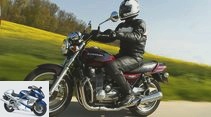
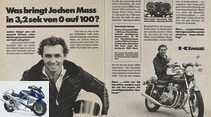
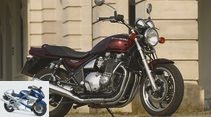
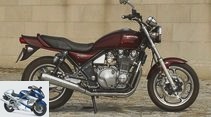
36 photos
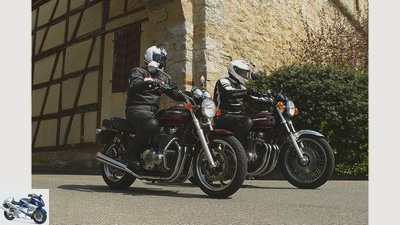
www.bilski-fotografie.de
1/36
Genetically not related, but they belong to the same family: Kawasaki Z 1000 and Zephyr 1100.
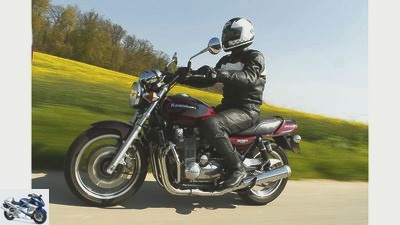
www.bilski-fotografie.de
2/36
Kawasaki Zephyr 1100.
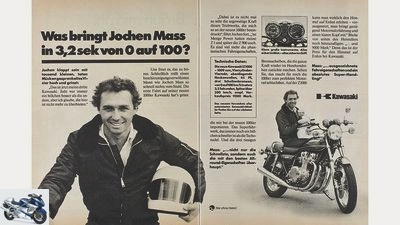
mps photo studio
3/36
This advertisement from 1977 has been indelibly burned into the author’s personal hard drive – from then on the enthusiasm for motorcycles could no longer be stopped…
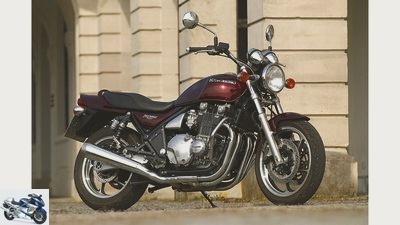
www.bilski-fotografie.de
4/36
Kawasaki Zephyr 1100.
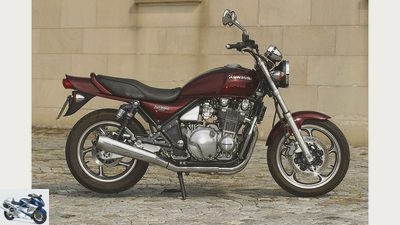
www.bilski-fotografie.de
5/36
Kawasaki Zephyr 1100.

www.bilski-fotografie.de
6/36
Kawasaki Zephyr 1100.
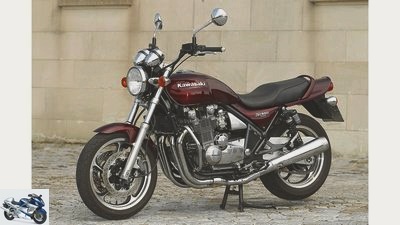
www.bilski-fotografie.de
7/36
Kawasaki Zephyr 1100.
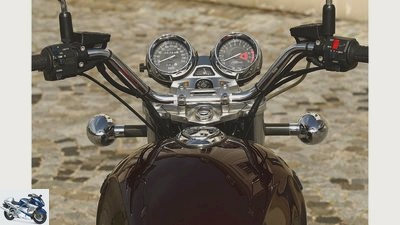
www.bilski-fotografie.de
8/36
Kawasaki Zephyr 1100 with nice instruments.
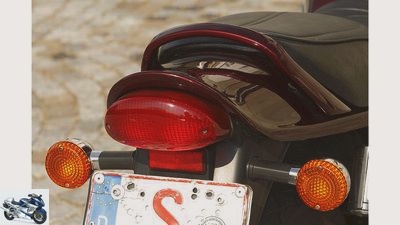
www.bilski-fotografie.de
9/36
Kawasaki Zephyr 1100.
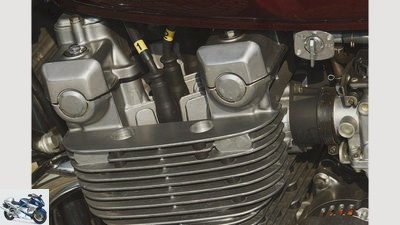
www.bilski-fotografie.de
10/36
Eight spark plugs in the four cylinders ensure optimal combustion.

www.bilski-fotografie.de
11/36
Kawasaki Zephyr 1100.
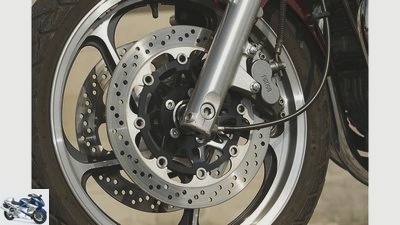
www.bilski-fotografie.de
12/36
Kawasaki Zephyr 1100.

www.bilski-fotografie.de
13/36
Four with two oil pumps: One takes care of the lubrication, the other supplies the cooling circuit of the two-valve valve.

www.bilski-fotografie.de
14/36
Precise chain adjustment thanks to the eccentric rear axle.
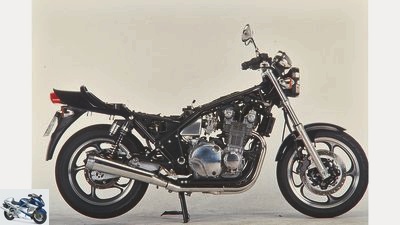
mps photo studio
15/36
Light and shadow: Zephyr 1100 with stable double loop frame, but inharmonious spring elements.
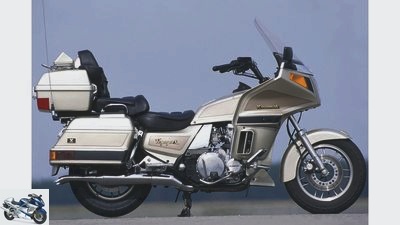
Hartmann
16/36
1987: Debut of the Voyager XII, not sold by us. Its water-cooled four-valve four-cylinder formed the engine basis for the air-cooled two-valve of the Zephyr 1100.
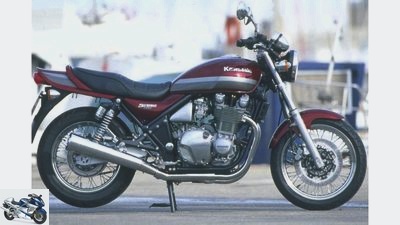
17/36
1996: The Zephyr 1100 (type ZRT10B1) now got spoked wheels with chrome-plated steel rims and braked with simpler double-piston floating calipers at the front. Price: 16,850 marks.
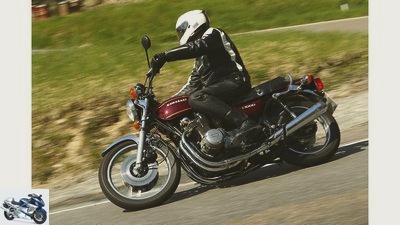
www.bilski-fotografie.de
18/36
Kawasaki Z 1000.
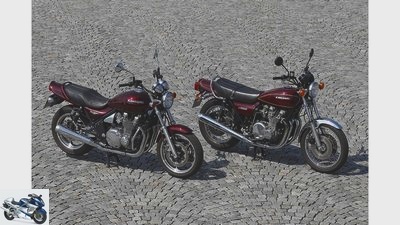
www.bilski-fotografie.de
19/36
In direct comparison, the Kawasaki Z 1000 and Zephyr 1100 reveal a surprising number of similarities.
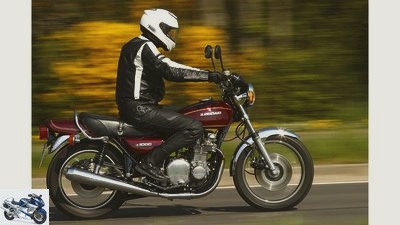
www.bilski-fotografie.de
20/36
The Kawasaki Z 1000 is surprisingly easy to handle.
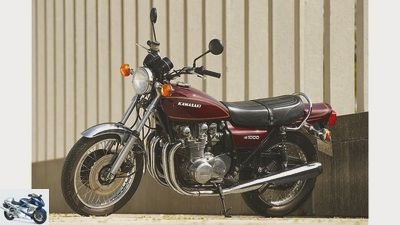
www.bilski-fotografie.de
21/36
Kawasaki Z 1000.
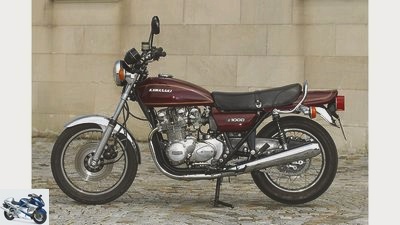
www.bilski-fotografie.de
22/36
Kawasaki Z 1000.
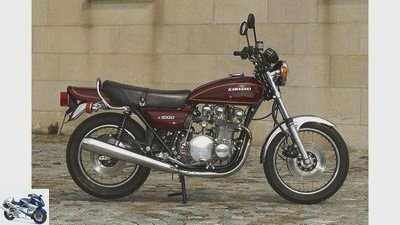
www.bilski-fotografie.de
23/36
Kawasaki Z 1000.
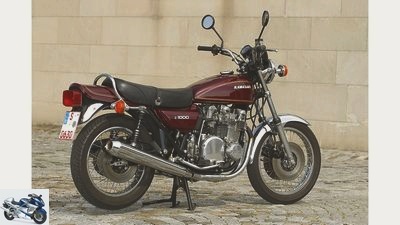
www.bilski-fotografie.de
24/36
Kawasaki Z 1000.
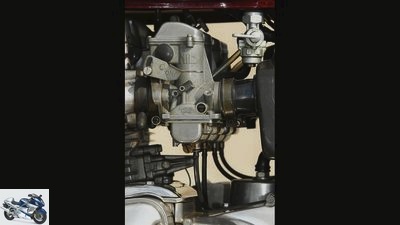
www.bilski-fotografie.de
25/36
The operation of the slide carburetors requires force.

www.bilski-fotografie.de
26/36
Kawasaki Z 1000.
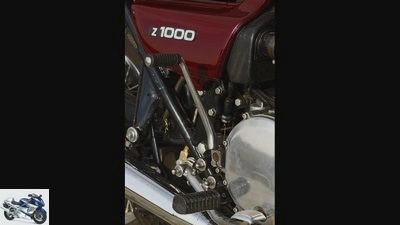
www.bilski-fotografie.de
27/36
Kawasaki Z 1000.
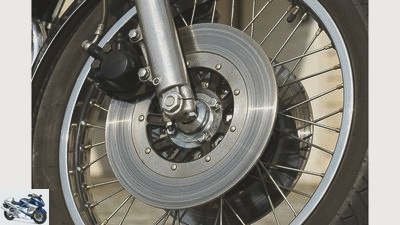
www.bilski-fotografie.de
28/36
Kawasaki Z 1000.
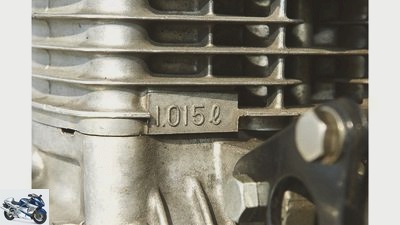
www.bilski-fotografie.de
29/36
The cubic capacity is cast into the cylinder bank.
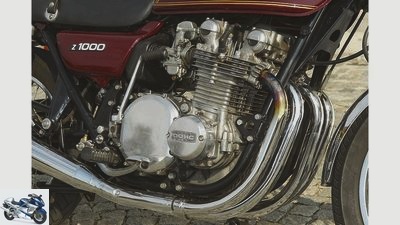
www.bilski-fotografie.de
30/36
Classic in top form: the four-cylinder of our photo model inspires after 65,000 kilometers with easy turning and smoothness.
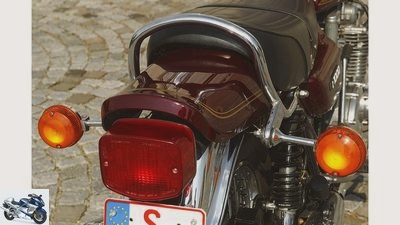
www.bilski-fotografie.de
31/36
Kawasaki Z 1000.
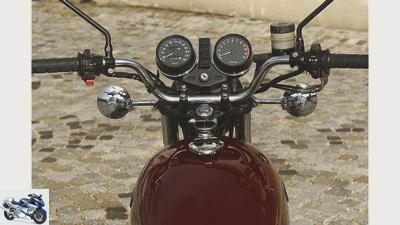
www.bilski-fotografie.de
32/36
The instruments do not require any explanation.

Kawasaki
33/36
Four millimeters more bore and detailed modifications increased both the performance and the stability of the Z 1000 four-cylinder.
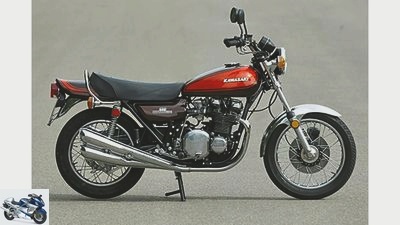
34/36
1972: Displacement, power and the sometimes nervous driving behavior made the 79 PS strong Z1 a legend – the 900 is famous as “Frankenstein’s daughter”. Price 1973: 7200 marks.
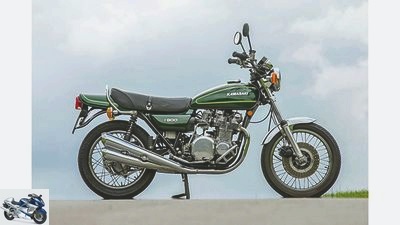
Arturo Rivas
35/36
1976: Detailed modifications characterize the Z 900, with a double disc at the front, reinforced frame tubes and now 81 hp. Still with four-in-four exhaust. Price 1976: 8,500 marks.
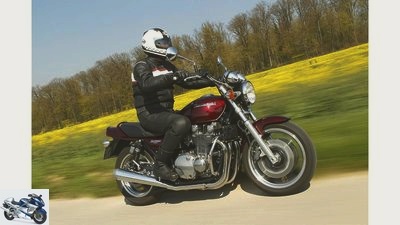
www.bilski-fotografie.de
36/36
The Zephyr 1100 offers a low seat height.
On the move with a Kawasaki Z 1000 and Zephyr 1100
Family happiness
Content of
Kawasaki’s Z 1000 and Zephyr 1100 look very similar, but are genetically unrelated. Nevertheless, even cast iron fans of the Z classics accept the younger one as a full family member.
Peter Stuyvesant, the mile runner from Camel or the Marlboro man could smoke as much as they wanted in the advertising campaigns of the 1970s – it left me completely cold. Until I came across an advertisement in MOTORRAD that was about real smoke. Because that really got me hooked: “What does Jochen Mass get from 0 to 100 in 3.2 seconds?” Was the question from the Kawasaki advertisers, which a happily smiling Formula 1 star answered: the Kawasaki Z 1000, of course, the new top model from the Japanese manufacturer.
Buy complete article
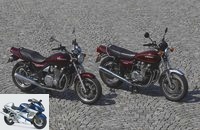
On the move with a Kawasaki Z 1000 and Zephyr 1100
Family happiness
Z 1000 offered. Mainly because, as an additional incentive, he also refueled his Kawasaki Zephyr 1100, which has been sharing space in Peter’s garage with all the other Z models for quite some time.
Zephyr 1100 is a successful reinterpretation
“The Zephyr is the most modern of my motorcycles. I think it’s just beautiful, even if it has nothing in common with the old Z models apart from the classic styling, ”says Peter, who therefore considers the much younger Kawasaki Zephyr 1100 – like many other die-hard Kawasaki scrap iron drivers – to be legitimate Family member considered.
There is no doubt about the way the two machines with their dark red metallic paints sparkle in the spring sun. From the round headlights to the teardrop-shaped tank to the characteristic rear bumper and the two silencers with the conical end pieces, Kawasaki’s designers have transferred the classic lines of the Kawasaki Z 1000 from 1977 to the new with great sensitivity. When the Kawasaki Zephyr 1100 was presented in autumn 1991, it was not a cheap copy, but a successful reinterpretation of the classic model. In direct comparison, you will of course discover differences in detail.
The Kawasaki Z 1000 dashes easily through curves
The Kawasaki Z 1000 from the seventies is taller and looks slimmer than the more compact and bulky one
Kawasaki Zephyr 1100. This impression is not misleading. Even when pushing and jacking up for the obligatory photo session, the Z 1000 feels significantly lighter, although it only weighs around ten kilograms less than the Zephyr.
After our photographer happily lifts his thumb, we finally get on our saddles. I sit more on the Kawasaki Z 1000 than in the machine, with a relaxed knee angle. Peters motorcycle, a slightly modified 77 model, with cones and the fork of the following year including brake calipers mounted behind the stanchions, carries the tall US handlebars. He forces me into an emphatically upright position. Personally, I would be more comfortable with the flat handlebars that were once offered as an alternative, but I’m sitting here on the longer lever. In combination with the classic narrow tires, the handling of the Z 1000 seems almost playful. Thousands of people speed lightly and easily through curves, changes of direction are possible with a light pull on the handlebars and thigh pressure. Yes, that makes it really easy for me to warm up to my childhood dream from the very first few meters. Especially since the four-cylinder is also wide awake and agile on the cable. You have to pull hard to open the slides in the four 26 mm carburettors, but they feed the combustion chambers so precisely that the two-valve valve pushes gently and jerk-free at the bottom and then turns with verve towards the redline.
However, I am even more enthusiastic about the flexibility of this roller-bearing motor, which after more than 65,000 kilometers runs so low-vibration and mechanically quiet that the comparison to the smooth-running Gold Wing boxer, which Schermer-Franz tried in the first test of the Kawasaki Z 1000, comes to mind . Is it because Peter had the carburettors adjusted especially for this trip? In any case, my colleague Stefan and I both agree that this Z-engine is the smoothest and most smooth-running we’ve ever driven. The smooth and precisely controllable clutch and the precise five-speed gearbox round off the positive impression.
Back then, engines were faster than the chassis
It makes sense that I’m so euphoric that I pull harder on the cable. And they are promptly reminded that at that time the engines were still faster than the chassis. So Peter’s fine red swings through the bends with plenty of liveliness. Both the fork with its thin 36 mm stanchions and the retrofit cones have apparently largely lost their damping properties over the decades.
A brisk pace on undulating sections reminds me more of a rodeo ride, like the Kawasaki Z 1000 bucks and jumps. In any case, I feel precious little of the “fantastic driving characteristics” that Jochen Mass once praised in the double-sided ad. After all, the underdamped chassis of the Z does not allow itself to be carried away with nasty reactions even in kamikaze mode. I am therefore pretty sure that the chassis of the Peters Z 1000 only needs an overhaul of the suspension elements in order to then confirm the statements made by the racing driver with ample damping. An assessment that Peter shares on the basis of his experience with his other Z-Oldies, as he then confirms to me. With the brakes, on the other hand, age cannot be disputed. They require a lot of hand strength at the front, in order to still bite into the two 295 discs quite toothless, supported by the acceptable rear disc brake. That was the state of the art at the time.
That we, as a classic magazine, bring age into play at first sounds a bit paradoxical. Fits here, however, in order to clearly demonstrate the rapid technical progress of the Kawasaki Zephyr 1100, which is just 15 years younger, especially with the stoppers. The only question is whether you can provide such evidence in other areas as well.
"I had the perfect Zephyr talked out of me"
Because in the first comparisons with the naked competition that was not yet particularly numerous in 1992, the flagship of Kawa’s Zephyr series impressed the testers primarily with its classic lines, but less with its driving characteristics. Too heavy, too weak, too unstable and too easy to drink – that was often the conclusion.
Which I didn’t care about ten years ago when I bought a used Kawasaki Zephyr 1100 myself. For me, the only thing that counted was their beguiling shapes, which had inspired me from the very first moment. In addition, the big Zephyr was the only way for me to at least get close to the appearance of the machine that not only racing drivers raved about for affordable money – the original Kawasaki Z 1000 had long been unaffordable. The fact that at some point I had my perfect Zephyr talked about is one of those mysteries that we seem to be confronted with in our biker life.
All the greater was the anticipation of seeing the fat girl again. As in the past, Peter’s red beauty casts a spell on me, captivating my eyes with its lavishly applied chrome, the harmonious lines flowing from front to back and the beautiful-looking, generously ribbed dohc engine that is aesthetically similar to that of the original from 1977 nothing is inferior. Except for the high accessory handlebar, the Zephyr, which was approved in 1994, is in its original state. As with the Kawasaki Z 1000, I would prefer the flat series version, which allows an extremely comfortable posture.
Z 1000 a bit livelier than the heavier Zephyr
The four-car starts spontaneously with a subdued babbling, already working hard just above idle to run up to top form in mid-rev. Above all, the two-valve valve, which is also pleasantly smooth-running thanks to the balancer shaft (see "In detail – technology") harder, turns not quite as greedily as the model from the 70s. Subjectively, the Kawasaki Z 1000 seems a bit livelier to me than the heavier Zephyr, which swings the mightier club in the lower speed range. Peters Zephyr can also be shifted quite smoothly, which cannot be said of every Kawasaki Zephyr 1100. Ultimately, the Kawas don’t give each other much in terms of performance.
Amazing. Like the fact that the more compact Zephyr shows a certain clumsiness in alternating curves that is completely alien to the ancestor. However, the age-old, hardened Bridgestone exedras are likely to have a significant share here. With modern rubbers, it is noticeably easier to handle and more precise, as I know from experience. The unbalanced suspension tuning – too soft at the front, too hard at the back – could also be improved with a reasonable amount of effort. Only then can the Zephyr take advantage of its more modern chassis with solid 43 mm fork and stiff aluminum box swing arm. A lack of damping reserves is then no longer an issue, even though the Kawasaki Zephyr 1100 rocks less than the old one.
Which doesn’t change the fact that the two Kawasakis – despite the lack of relationship – have more in common than expected. Not just stylish, but also in terms of strengths and weaknesses. I therefore consider the Kawasaki Zephyr 1100 a child of the classic Z family. Whether Jochen Mass would agree?
opinion
Stefan Gluck about the Kawasaki Z 1000: As far as my motorcycle socialization is concerned, I was a little late for the seventies, but especially those thousands did it to me. Our photo model not only has the most sophisticated engine of all Z-models I’ve driven so far, but is also in very good mechanical and optical shape. So good that you could easily use this Z 1000 as an everyday bike. Which is of course not done in terms of preserving the substance. Of course, the 15-year-old Zephyr has more potential in many areas of driving dynamics, especially the brakes. But that it can only really show after a chassis optimization. But even then, I find that the more modern Zephyr 1100 cannot hold a candle to the old Kawasaki Z 1000.
Uli Holzwarth about the Zephyr 1100: The Kawasaki Z 1000 had a great influence on me, it is one of my personal legends, not least because of the unforgettable advertising campaign. Nevertheless, it is the Kawasaki Zephyr 1100 that I particularly like. Maybe because it still pains me that I once gave mine. Definitely, because for me the Zephyr 1100 is the most beautiful reinterpretation of a classic Japanese four-cylinder, with a style that is just as timeless as the Z-Kawas. I don’t care that there are now stronger and more stable naked bikes. After all, I haven’t forgotten how easy the Zephyr 1100’s ailing chassis can be improved with modern tires, a fork update and accessory struts. Oh yes, the longing …
Z 1000 in detail
Kawasaki Z 1000, (1977–1980), price 1977: 9,000 marks
technology
The step to the full liter displacement by means of a four millimeter larger bore (70 instead of 66 mm, displacement 1015 cm³) was accompanied by numerous modifications to the then five-year-old Z1 four-cylinder. In addition to improving the stability of the four-cylinder with roller bearings, the aim was to reduce the noise level. This was primarily due to the four-in-two exhaust system in combination with a more effective intake silencer on the new air filter housing. The Kawa engineers also tackled the mechanical noises with reinforced walls on the valve covers and changes to the chain sprocket cover and chain guard. The crankshaft (larger crank webs), the cylinder head gasket, the exhaust stud bolts (reinforced from 6 to 8 mm), the valve train (new valves with fuses as in the Z 650) and the tachometer drive, which is also operated by the to avoid oil leaks, have also been revised Z 650 was adopted. With a rear disc brake, the now needle-bearing swing arm and a few other changes to the brackets and battery box, the chassis of the Kawasaki Z 1000 also showed some significant changes compared to its predecessors. The thorough revision of the thousands was rounded off with a larger battery, improved handlebar switches and the more inconspicuous cable routing through the handlebars.
Purchase check
Around four decades left traces on all motorcycles. Which is of course why a Kawasaki Z 1000 should first be searched for the usual suspicious traces of wear, decay and mutilation by previous owners. Typical weaknesses relate in particular to the electrical system with embrittled cable harnesses or defective regulators / rectifiers. In the case of higher mileage, an (possibly only partial) engine overhaul has to be taken into account. You can’t avoid new valve stem seals anyway, unless they have already been replaced. However, worn piston rings can also be responsible for the telltale blue stain from the exhaust. Speaking of the exhaust: For lovers of an original Z 1000, the purchase decision depends on the condition of the exhaust system. The slim original silencers of the Z 1000 A1 / A2 models are now outweighed by gold because they are no longer available and there are currently no replicas!
market
So far, the prices for good, original Kawasaki Z 1000 are still slightly below the level of the Z1 and Z 900 models with the characteristic four-in-four exhaust. Very good Z 1000 with flawless silencers should therefore still be available for four-digit amounts, for road-ready restoration objects from 3500 euros must be taken into account.
Specialists
- Frank Bach: Telephone 065 71/14 83 70, www.zclassicservice.de
- Roland Lenden: Phone 061 71/5 54 11, www.lenden.de
- Clubs and forums: www.z-club-germany.de, www.kawasaki-z-classiker.de
history
- 1972: Displacement, power and the sometimes nervous driving behavior made the 79 hp Z1 a legend – the 900 is famous as “Frankenstein’s daughter”. Price 1973: 7200 marks
- 1976: Modifications in detail characterize the Z 900, with double discs at the front, reinforced frame tubes and now 81 hp. Still with four-in-four exhaust. Price 1976: 8,500 marks
Technical data (type Z 1000 A1)
engine: Air-cooled four-cylinder four-stroke in-line engine, two overhead camshafts, two valves per cylinder, actuated via bucket tappets, displacement 1015 cm³, power 63 kW (85 PS) at 8000 / min, max. Torque 81 Nm at 6500 rpm
Power transmission: Multi-disc oil bath clutch, five-speed gearbox, chain drive
landing gear: Double loop frame made of tubular steel, telescopic fork, Ø 36 mm, two-arm swing arm made of tubular steel, two spring struts, wire-spoke wheels, tires 3.25 H 19 at the front, 4.00 H 18 at the rear, double disc brake at the front, Ø 295 mm, two-piston fixed calliper, rear disc brake, Ø 285 mm, two-piston -Fixed saddle
mass and weight: Wheelbase 1505 mm, weight with a full tank of 256 kg
Top speed: 210 km / h
Zephyr 1100 in detail
Kawasaki Zephyr 1100, (1992-1997), 1992 price: 14,245 marks
technology
After the (foreseeable) success of the Zephyr 550 and 750, Kawasaki followed in the fall of 1991 with the Zephyr 1100 as the flagship of the classic series. The air-cooled four-cylinder was a new design, based on the substructure of the Voyager XII, a water-cooled cardan travel steamer, which we do not offer. Its crankshaft with a stroke of 62.6 millimeters and the 73.5 bore in the large Zephyr resulted in a displacement of exactly 1062 cm³. Instead of four valves and two balancer shafts, however, the big naked woman had to make do with half each. In the Zephyr 1100, this was ensured by a double ignition with eight spark plugs and a secondary air system for up-to-date emissions. With the prototypes, the Z-models of the 1970s, the shorter-stroke Zephyr four-cylinder actually only had air cooling and also two overhead camshafts with adjusting shims positioned between bucket tappets and valve stems. While the tourist motor donor still had hydraulic valve tappets, the camshafts of the Zephyr had to be removed – as in the past – to adjust the valves. In contrast to the blessed Z models, the Kawasaki Zephyr 1100 had a crank drive with slide bearings, and an anti-hopping clutch was also used, which was also hydraulically operated. The chassis also revealed clear differences. A stable double loop frame made of steel tubes, the massive aluminum box swing arm with eccentric mount for the rear wheel axle, a solid 43 mm fork and snappy four-piston brake calipers at the front enabled significantly better driving stability than with the ancestors from the 70s despite the classic layout.
Purchase check
Mechanically, the air-cooled two-valve engine of the large Zephyr is a rock-solid and stable engine. Problems with second gear jumping out under load are known, but do not seem to be a general problem. Nevertheless, always pay attention to this during the test drive. The same applies to dull paintwork and rust, which can spread over a large area in neglected specimens. Especially on chrome (wire wheels!) And screws, but often also inside the tank. Which holds a certain tragedy, because today there are unfortunately no more replacements for completely rotten Zephyr tanks – as well as for paint parts!
market
A Kawasaki Zephyr 1100, of which almost 5600 copies have been sold in this country, is (still) relatively cheap. The majority of the offers are between 2500 and 3500 euros, whereby the maintenance condition rather than the mileage seem to determine the price level. For over 4000 euros, however, the air is pretty thin even for original specimens in top condition with mileages of less than 20,000 kilometers. Not least because of the wide range of similarly knitted machines nowadays, such as the Suzuki GSX 1400, Yamaha XJR 1300 or Honda CB 1300. These not only have more steam than the large Zephyr, but also the more stable chassis, often in the case of the Honda even with ABS.
Specialists
Uwe Hasler (Ex-Zephyr-Depot) offers help with problems, phone 082 30/4883 (from 5 p.m.)
Clubs and forums
- www.igzephyr.de
- www.zephyrfreunde.de
- www.zephyr-treff-ruhr.de
- www.zephyr-zone.com
history
- 1987: Debut of the Voyager XII, not sold by us. Its water-cooled four-valve four-cylinder formed the engine basis for the air-cooled two-valve of the Zephyr 1100.
- 1996: The Zephyr 1100 (type ZRT10B1) now got spoked wheels with chrome-plated steel rims and braked with simpler double-piston floating calipers at the front. Price: 16,850 marks
Technical data (type ZRT 10 A)
engine: Air-cooled four-cylinder four-stroke in-line engine, two overhead camshafts, two valves per cylinder, actuated via bucket tappets, double ignition, displacement 1062 cm³, output 68 kW (93 PS) at 8000 / min, max. Torque 88 Nm at 7000 rpm
Power transmission: Multi-disc oil bath clutch, five-speed gearbox, chain drive
landing gear: Double loop frame made of tubular steel, telescopic fork, Ø 43 mm, two-arm swing arm made of aluminum box sections, two suspension struts, cast aluminum wheels, tires 120/70 V 18 front, 160/70 V 17 rear, double disc brake front, Ø 310 mm, four-piston fixed calliper, Rear disc brake, Ø 240 mm, two-piston fixed caliper
mass and weight: Wheelbase 1500 mm, weight with a full tank of 266 kg
Top speed: 207 km / h
Related articles
-
Artistic comparison test Evergreens against current top models BMW R 1100 RS against R 1100 S Kawasaki ZZ-R 1100 against ZX-12R Yamaha YZF 1000 Thunderace against …
-
On the move with Kawasaki GPZ 900 R and Yamaha FJ 1100
fact 39 photos fact 1/39 Hurry with a while, always slowly with the young horses – sayings like these were definitely not up for debate when the new,…
-
Air-cooled big bikes Kawasaki GPZ 1100 UT, Laverda RGS 1000 and Suzuki GSX 1100 EF
fact 48 pictures fact 1/48 The engines are the stars, they still exude charm and, in the case of GPZ, RGS and GSX, clearly inspire …
-
On the move with the Honda CB 900 F Bol d‘Or, Honda CBX, Kawasaki Z 1000 ST and Kawasaki Z 1300
Arturo Rivas 45 pictures Arturo Rivas 1/45 Six against four for first: Honda CBX and Honda CB 900 Bol d’Or. Arturo Rivas 2/45 Honda CBX. Arturo Rivas 3/45 …
-
On the move with Honda CB 1100 F and Kawasaki GPZ 1100 B2
www.factstudio.de 29 photos factstudio.de 1/29 Picture gallery: Honda CB 1100 F and Kawasaki GPZ 1100 B2 on the move. factstudio.de 2/29 Honda CB 1100 F…
-
On the move: Honda VF 1000 R, Kawasaki GP Z 900 R, Suzuki GSX-R 1100
Jahn On the move: Honda VF 1000 R, Kawasaki GP Z 900 R, Suzuki GSX-R 1100 Technical revolution Content of They drove us crazy – and saved us money:…
-
fact Concept comparison Honda CBR 1100 XX Kawasaki ZX-12 R Suzuki GSX-R 1000 Suzuki GSX 1400 Yamaha FZS 1000 Fazer Yamaha FJR 1300 Six bombs The six …
-
Big bikes: Honda CB 1100 F, Kawasaki Z 1000 J and Suzuki GSX 1100 Katana
fact 21 pictures fact 1/21 Suzuki GSX 1100 S fact 2/21 Honda CB 1100 F: Technology Compared to the successful 900, the undisguised …
-
On the move with the Kawasaki Z 1000 R.
Wolf 25 pictures Wolf 1/25 Urahn: The roller bearing mounted R-motor is still based on the 900 of the Z1. Bore: once 66, now 69.4 mm. Wolf 2/25 The …
-
Kawasaki ZL 1000 and Yamaha Vmax
Stefan Wolf 38 Image archive 1/38 The “new” Vmax, in the range since 2008, also boasts superlatives in terms of performance, acceleration and …